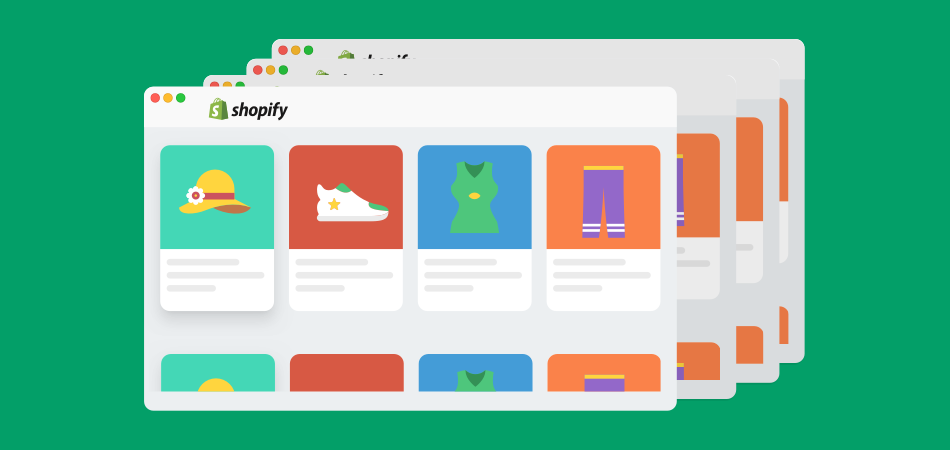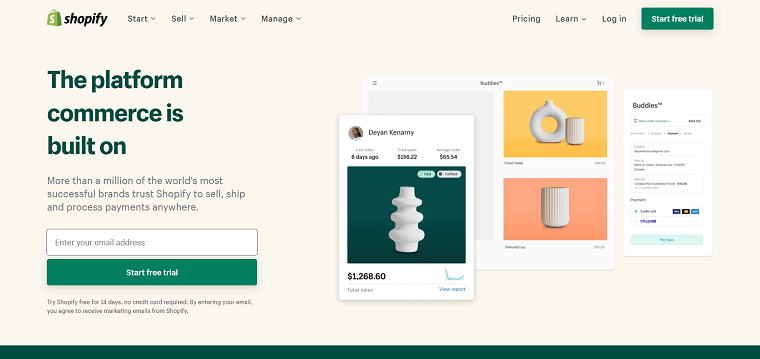Can I Have Multiple Shopify Stores to Maximize Sales?

As you start your eCommerce journey, it's essential to keep your Shopify store up and running. However, as your business grows, you may find that managing multiple Shopify stores becomes necessary to expand your product range.
Having several Shopify stores under one domain name is feasible, but you must be well-prepared to manage them effectively. Running multiple Shopify stores can become challenging quickly, so it's crucial to follow best practices to ensure your multi-store eCommerce operation runs smoothly.
If you're ready to dive into managing multiple Shopify stores, read on to discover how to effectively oversee more than one Shopify store, the benefits of doing so, and the challenges you might encounter along the way.
Is It Possible to Have More than One Shopify Store
Yes, you can have multiple Shopify stores. You can either have multiple stores with different products and branding, or one store with multiple product lines. Having multiple Shopify stores can be a great way to expand your business and reach more customers. It can also be a great way to test out new products and ideas.
Having more than one Shopify store is possible, but whether you must do that or not is another question. The decision depends upon your requirement - if you are selling similar kinds of products, then it might make sense to have a separate account per product line.

If you sell unrelated products, you can have multiple Shopify store accounts. You can have separate accounts if you are selling one product line. Multiple store accounts will increase your expenses, but you get additional security and privacy.
Creating Multiple Shopify Stores On One Account
Unfortunately, you cannot have more than one Shopify store under one account, but you can own multiple accounts to run multiple stores. As you create new accounts for each store, you must manage their inventory through separate Shopify accounts.
Shopify is flexible enough to allow you to create multiple stores under one email address. With this, you get one single source for communication, but you must log in to each account separately.
Switching Between Multiple Shopify Stores
As you need only one email address to manage multiple Shopify stores, you must know how to switch between multiple Shopify stores. Switching between two Shopify stores is important so that you manage them all simultaneously. Below is a list of things you can do while switching between multiple stores:
- When managing different accounts, you can assign various permissions to the users. These permissions are already set and help you in managing all of your stores effectively.
- While switching between multiple stores, you can manage your orders and inventory. If you want, you can optimize your product pages for a better conversion rate.
- Shopify allows you to secure other stores when you're busy managing one. The store switcher comes with external logins with GSuite and two-step authentication, making switching much safer and more secure.
- If you have more than 500 stores, you can use the search feature to find the one you need. You'll find the feature in the store switcher menu, and there's no issue even if you're managing more than 500 stores.
What Is the Need for Building Multiple Shopify Stores
Managing multiple stores seems like a daunting task, but with the help of Shopify's features, it is much easier. However, running multiple stores is always worth the effort, and below are some of the reasons why you must build multiple Shopify stores.
To Make International Sales
When eCommerce store owners observe that their store is doing well, they start selling internationally and expect people from other countries to buy their products. However, their efforts are in vain, as this strategy never works when running one store.
| Get Started Now to Grow Your Online Business with the Best AliExpress Dropshipping Tool - DSers! |
The reason behind this is you need to consider the consumer's shopping habits, needs, and lifestyle issues, as they can be different in different counties. So, you can start a separate Shopify store to target the audience in some other country and manage it that way. The great thing about Shopify stores is that you can set each one up for any market you want to target. You need to make a few changes to fit the new market, like the language and currency.
For example, suppose you're selling your products in a European country. In that case, the store must only feature regionally-exclusive products, and the pricing should be in the same currency the country is using.
To Reach a Different Section of the Audience
As soon as you see that your store is growing and you're successfully reaching all your marketing goals, you must expand the reach and start selling to different sections of customers. But, when you do that, running a Shopify store that sells various products to a plethora of customers won't work.

So, it would be best to create multiple Shopify stores to target different customer sections. For example, if you're selling health supplements, you must create a store for the ones interested in bodybuilding and one store for the ones that need health supplements for better health.
By using a subdomain, you can delineate each store while keeping them all under your primary domain's umbrella. This way, your customers can easily find the products they're looking for without getting overwhelmed by too many options.
Outletting
When you have a lot of items in your store or stores, you must offer cheap discounts on them to sell them quickly and fill the inventory with new ones. But, if you start offering huge discounts on your main store, it means you're devaluing it. Moreover, selling items of a specific brand at a low price will make it lose its standard.
So, the best solution is creating a sub-brand on a different Shopify store as an outlet. It will help you eliminate any products taking space in your inventory, and as you'll be selling them at a low price, you'll be able to reach a new set of customers without harming the brand's reputation.
Useful Tips to Help You Set up and Manage Multiple Shopify Stores
Setting up multiple Shopify stores is more complex than it seems. Imagine managing numerous websites and still having them look and work the same. This can lead to a lot of time-consuming work, and you can lose customers along the way, but most importantly, Shopify stores need to be run like businesses. With that being said, let's take a look at some useful tips to help you manage multiple Shopify stores.
Create a Store
First of all, you need to begin by creating a Shopify store; if you have no idea about that, you can seek help from multiple blogs online. However, setting up more than one store follows the same process, but we suggest you use only one email address to keep all communications in one place.
Start Optimizing
Once you start serving customers in different countries, you must optimize each store as per the target audience. For example, if you're targeting North America, you need two stores - one for the USA and one for Canada.
Depending on the location of your target market, the audience will search for different products, which means that not all stores will use the same sales keywords and blog subjects. Hence, using local keywords increases the chances of your website's success in that region.
Moreover, you can install Google Analytics separately for each shop, which will help you understand that region's consumer trends. You can use country-specific offers, deals, and local service pages to increase the chances of people finding the right store for them.
Use a Real-Time Inventory Management System
When you're managing multiple Shopify stores, it is mandatory to have inventory management software to keep an eye on the stock levels. With its help, you'll always be ready with on-demand products and never run out of products whenever there's high customer demand. In addition, you can use the best Shopify apps to automate your online business, and some of them are good enough to notify you about any low-inventory situations.
You can use this data to keep your customers updated on your inventory. By always having accurate information on what you have in stock, they'll never have to worry about whether or not you'll have enough to sell them.
Plus, if they can see which products are running low, it might even encourage them to buy those items before they run out completely. Good customer service is key to keeping your business running smoothly - and this is just one way you can do it.
Make Your Customer Service Better
Having great customer service means all the customer queries and order information will be available in one spot. As the customers give you feedback, you can use it to process product development.
Tracking all customer support tickets can be a bit problematic because you'll have multiple Shopify stores. So, you can use a ticketing system, which will help you improve all communications with your staff and result in a better customer experience.
Bottom Line
So, that is all you need to know about having and managing multiple Shopify stores. Once you figure out how many stores you need and learn the basics to manage them effectively, you can see your business growing as you were expecting. However, if you like to know more tips about eCommerce and dropshipping tips, read the DSers Blogs.












 Company
Company
 Why Choose DSers
Why Choose DSers
 Blog
Blog
 Help Center
Help Center




 Live Chat
Live Chat